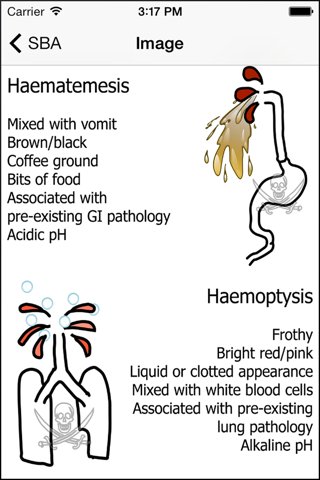
Medical SBA Questions (Finals/MRCP)
* High yield, multi step questions in clinical medicine *
* Interactive animations and learning games *
* Diagrams to summarise the most relevant parts of UK and international guidelines from the point of view of a junior doctor on call *
---
As students/doctors, we all want to be super productive whenever we make the sacrifice from our limited free time to learn some medicine.
Some of the most effective learning I’ve had is from websites like Radiology Masterclass and Life in the Fast Lane. They give you chunks of material and apply it to clinical cases, with clear explanations and visual reinforcement. With this in mind, I have made visual explanations for questions wherever possible. I have also ensured that the explanations were clear enough to be understood by various medic friends when they tried using it in the middle of the night.
I also didn’t want to just repeat the same questions you read everywhere. Medical education consists of bricks and cement. The bricks are the things you learn in medical school e.g. what drugs to give in hyperkalemia. The cement is what you need to know to put this into practice e.g. how fast you can give calcium gluconate and what you would practically do if the patient were also on digoxin.
Medical training generally prepares us very well for rattling through the management of a STEMI in an OSCE situation, but not so much for whether or not you would actually start the ACS meds in a patient with known recurrent extensive gastritis and a GI bleed last month.
We learn all about A-B-O mismatches in transfusions, and how dangerous they are, but less about how to respond to a 0.8 degree rise in temperature with a 10mmHg fall in BP 5 minutes after the transfusion starts.
This app was written based my experiences as an FY1. I reflected upon these and combined the evidence, advice from seniors and going to back to basic science to work out what would be best practice for next time for these cement areas of medicine. This is hopefully reflected in the questions and their explanations.
I also realised how many misconceptions are commonly taught and wanted to bring attention to them e.g. V/Q mismatch is the main reason COPD patients on high flow oxygen become hypercapnic, not the hypoxic drive. Some of the answers may run against what is conventionally taught. These are all referenced with national/international guidelines.
Most questions include learning points that would be helpful for MRCP and/or finals.
About me:
I have taught students throughout my time at medical school (Oxford and UCL) and as a Foundation Doctor, and am currently working in Academic Education as an FY2. I have been experimenting with using video based teaching in new environments – see the YouTube channel (youtube.com/drcrunchvideos), kept a medical education blog (drcrunch.wordpress.com) and a SBA site (drcrunch.co.uk). I am also an associate editor of the new Survive Sepsis manual and have recently passed MRCP Part I on my first attempt with a scaled score of 857/999.
